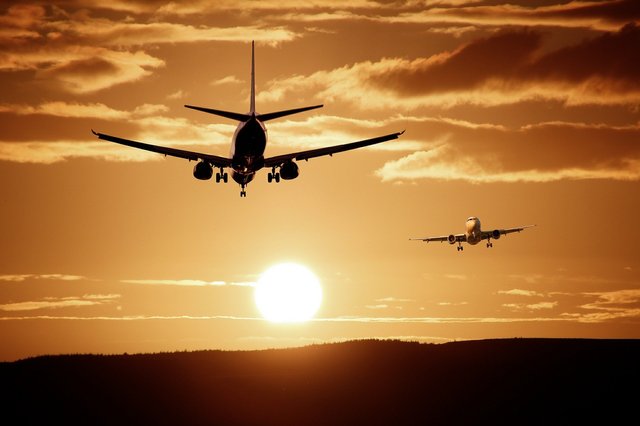Technology to Make Air Travel Cleaner- Co2 E-Fuel

Technology to Make Air Travel Cleaner- Co2 E-Fuel
https://www.wsj.com/articles/microsoft-alaska-airlines-back-co2-to-jet-fuel-technology-11657800000
https://stay-grounded.org/e-fuels-a-realistic-alternative-for-powering-aviation/
Pixabay
The air transporation and travel industries contribute approximately 3-4% of the total greenhouse gas pollution in America. When you look at airplanes, they are a huge opportunity to reduce pollution from man-made sources. Investment and research supported by a partnership between business and government are required to take the next step to produce cleaner-burning e-fuels for the airline industry.
Carbon dioxide (CO2) can be broken into fuels that are referred to as “e-fuels”. This is in companion with the current processes used to break water into hydrogen gas (H2) that can be used as clean-burning fuel in cells and other processes. Emerging clean and green-energy sources including solar power, hydrogen fuel cells and battery power pose issues for aircraft travel and operation due to their weight and gap in power produced versus the requirement. The energy required to create clean fuels including hydrogen and e-fuels can come from clean sources for a total reduction in pollution that makes sense for clean travels.
The viability of e-fuels for use in airplanes for commercial, business and cargo travel is being debated currently. Currently, kerosene and a complex fuel mix are used as fuel in airplanes, and this contributes to pollution in the skies. E-fuels are generated when CO2 is chemically separated and hydrogen is added to the mix when water is broken and hydrogen gas is liberated. The power used for this process can be obtained through clean-energy sources including solar, hydro, tidal, geothermal and other methods. Currently, the pollution problem from shipping is being worked on using nuclear molten salt reactors (MSR) and hydrogen fuel sources. Engine replacement and retrofits on containerships will be costly, and e-fuel retrofits will bring modification costs as well, but it will be worth the reduction in pollution and regulatory oversight.
Large companies including Alaska Airlines and Microsoft are actively working to solve the problems we face from commercial airline travel pollution. Studies show that burning kerosene fuel releases greenhouse gasses and nitrogen oxides that can further pollute the environment. A cleaner-burning e-fuel or alternative fuel will be able to reduce the full spectrum of polluting gasses, but further research and investment is required to develop the best fuels and infrastructure. The amount of fuel that powered airplanes in 2020 was 10.2 million tons of conventional fossil fuels, and the total amount of energy provided by clean energy sources must double to meet current demand.
The airline industry can respond to the pollution issues they face through multiple methods. Investment can be made into alternative fuels that are not as polluting as fossil fuels, they can work to create e-fuel production infrastructure and they can advocate for governmental support as well. As consumers, we can also advocate for Maglev and other high-speed rail projects to eliminate the need for airplane travel for short trips between adjacent cities. We must confront and question our energy-sources and how they impact the planet.
Posted on Hive, Blurt and Steemit